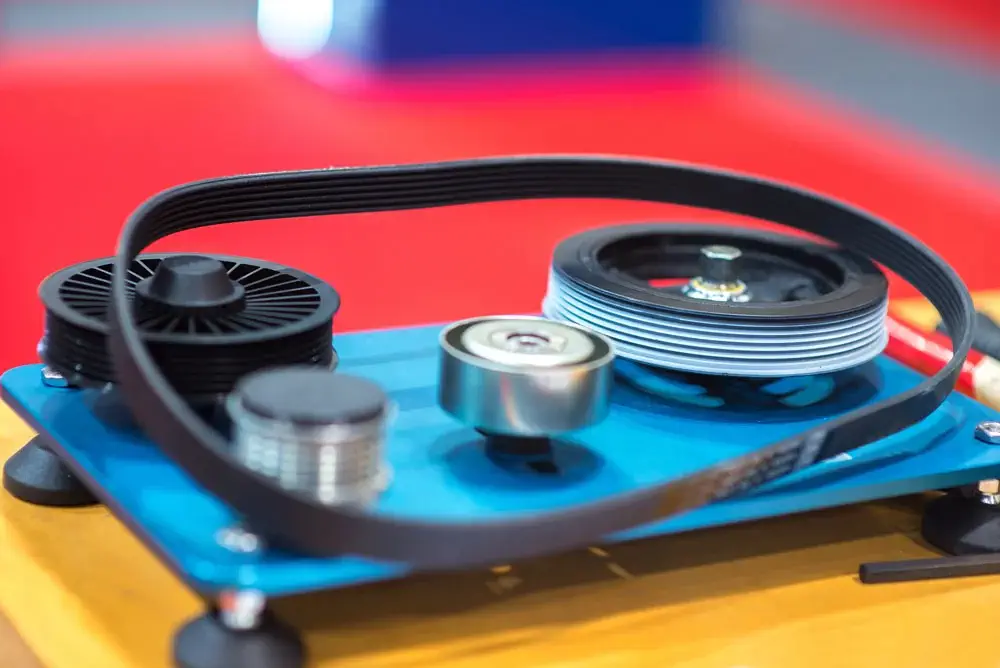It’s easy to forget about timing belt maintenance after replacing it. After all, it can withstand years of wear and tear without needing replacement, making it easy to forget about your service interval which may be as much as every 100,000 miles. But any mechanic will tell you that routine maintenance is vital to keeping your timing system (and your car) healthy and running.
Timing Belt Functionality:
- Essential for synchronizing the engine’s camshaft and crankshaft.
- Helps maintain the engine’s timing for proper combustion.
- Controls the operation of the engine valves and pistons.
Sometimes, just paying attention to your vehicle recommendations is sometimes not enough. Because of its importance, you need to ensure that your timing belt is working well. This means you should take your vehicle in for routine checks if you notice your engine performance declining. Neglecting it and failing to take your vehicle for routine checks can lead to complete engine failure, which would necessitate replacing the entire engine or buying a new car.
Risks of Ignoring Timing Belt Maintenance:
- Can lead to severe engine damage or complete engine failure.
- Neglecting routine checks and maintenance increases the likelihood of the belt breaking while driving.
It’s important to take your vehicle in for routine system checks and pay attention to the engine while driving. Do not ignore the signs if your timing belt is loose or going bad.
Preventive Measures and Maintenance Recommendations:
- Regular inspection and timely replacement of the timing belt as specified by the vehicle manufacturer (typically every 60,000 to 100,000 miles).
- Watching for warning signs like engine noises or misfires and seeking immediate mechanical advice if these symptoms appear.
Mission Auto Repair believes it is incredibly important to recognize these signs to replace the belt before it causes engine destruction. So, we’ve compiled a list of the most common signs that your timing belt is starting to go bad. This way, you can address any issues before it’s too late.
Hearing Noises Coming from Your Engine
A few different noises can indicate a bad timing belt. Ticking is the most common, but you may also hear high-pitched whirring or clicking. While these noises from your engine could mean many things, paying attention to when they happen is the key to distinguishing the cause. “If you hear these noises when you accelerate, they are more than likely indicators of issues with the timing system. However, no matter what, if your vehicle is making unwanted noises, you need to take it to a mechanic.
Engine Misfires
“Occasional jerking movements or unexpected variations in engine speed could signal that the timing belt has slipped and is not properly aligning the engine’s pistons and valves.”
A misfire is one of the more obvious signs that your timing system is failing. It occurs when the vehicle suddenly jolts forward, even when your foot isn’t on the gas. This can be caused by a worn or loose timing belt slipping too far, causing the cylinders to open and close prematurely. If you notice this, get your vehicle checked out right away. Misfires can potentially put you, your car, or the people driving around you in danger.
Not Feeling the Power Behind Your Acceleration
“A worn timing belt can affect the engine’s ability to maintain consistent power output, noticeable especially between 2,000 and 4,000 RPMs.”
Inconsistent acceleration rates can be a sign of a bad system. The timing belt is responsible for maintaining consistent engine speeds. So, when it starts to become old and worn, the ability to speed up starts slowing down. This lack of acceleration tends to be best noticed between 2,000 and 4,000 RPMs and can also be accompanied by rattling or other unusual noises when revving.
Large Clouds of Exhaust
“A malfunctioning timing belt can lead to unburnt fuel or oil burning within the engine, manifesting as large clouds of smoke from the exhaust.”
When your timing belt goes bad, your engine is likely to be overworked. The timing system ensures each cylinder fires in tandem with each other, so when the system goes bad, your engine needs to work a lot harder to achieve the acceleration you require. This results in large amounts of smoke coming out of your exhaust. If you notice an abnormally large amount of exhaust consistently coming out of your car, take your vehicle into the shop before you continue to drive it.
Getting Your Timing Belt The Service It Needs
No matter what, if you notice any of these signs or symptoms in your car, you should get it checked out right away. The timing system is one of the most important in the car, and if it goes bad while you’re driving, you’ll have to replace your entire engine. So don’t wait; take it to a skilled mechanic before it’s too late.
Professional Help and Services:
- Consult with ASE-certified technicians for thorough diagnostics and reliable repairs.
- Mission Auto Repair offers comprehensive services from system health diagnostics to full timing belt replacements.
The expert team at Mission Auto Repair can assist you with any service your timing system needs. From diagnostics on the system’s health to full timing belt replacements, our ASE-certified master technician can ensure your car is safe to drive. Call our office today to set up your appointment!


